 |
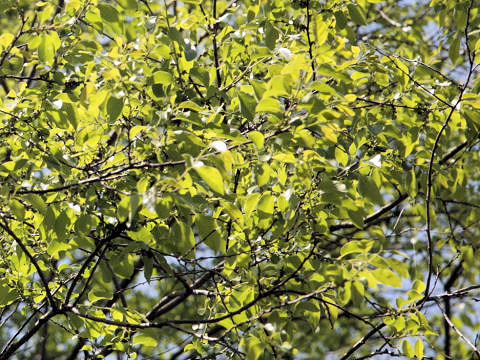

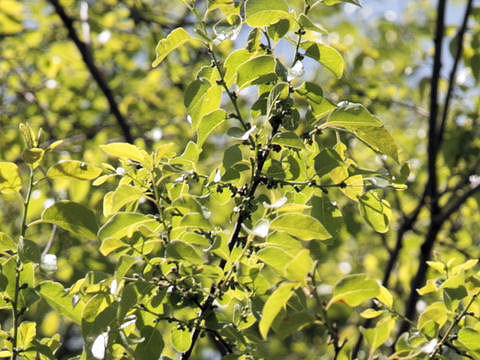

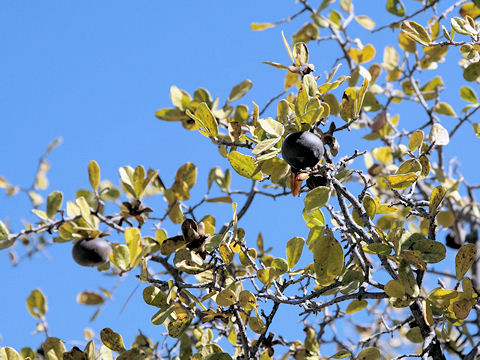

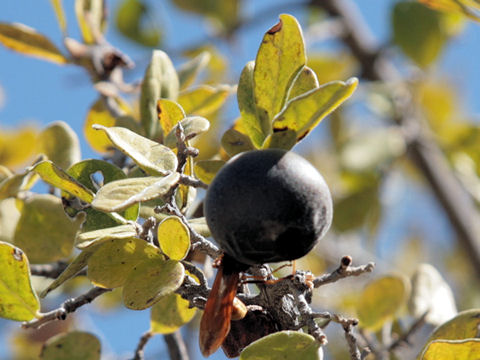

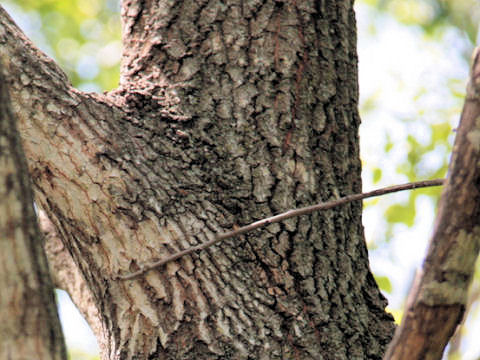

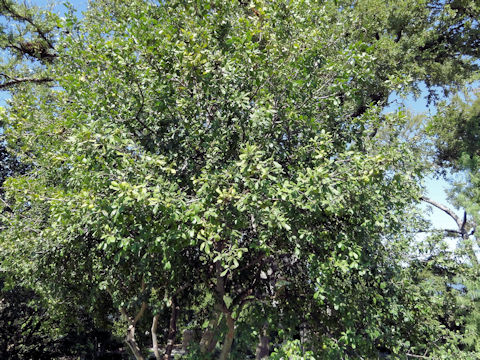

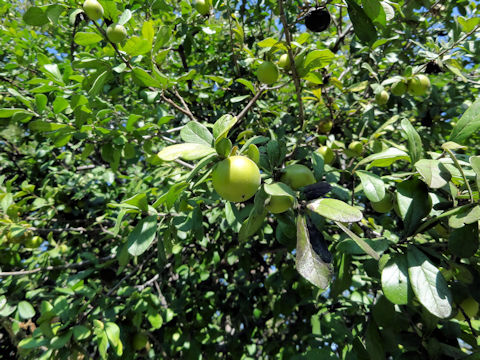

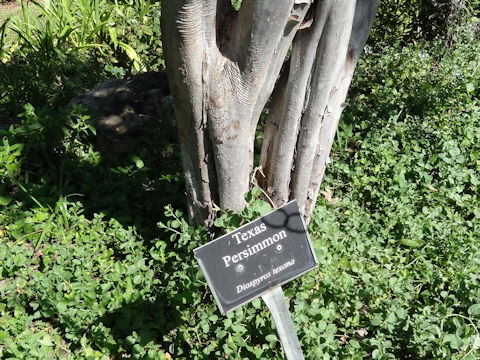

|

|
アメリカの中南部、テキサス州中・南部からメキシコ北東部に分布しています。乾燥した高原や渓谷、明るい林内などに生え、高さは12メートルほどになります。樹皮は淡い灰赤色、薄く滑らかで剥離します。葉は倒卵形から長楕円形で厚く、縁は外側に巻きます。雌雄異株で、春に小さな白い花を咲かせます。雄花は1〜3個集まってつき、雌花は単独です。果実は直径2センチほどの核果で、夏の終わりに黒く熟します。果肉は黒くて甘く食用になります。果実は黒色の染料としても利用されてきました。
|

|
カキノキ科カキノキ属の落葉高木で、学名は Diospyros texana。英名は Texas persimmon、Black persimmon、Mexican persimmon。
|

|
The Texas persimmon (Diospyros texana) belongs to Ebenaceae (the Ebony family). It is a deciduous tall tree that is native to the central-southern United States; southward from central and southern Texas to northeastern Mexico. This tree grows in arid highlands, canyons or open woodlands and can reach about 12 m in height. The bark is pale reddish-gray, smooth and peels thinly. The leaves are obovate to oblong, thick and recurving outside. It is dioecious and blooms small white flowers in spring. The male flowers crowd 1-3 and the female flowers are solitary. The fruits are drupes about 2 cm across. They are ripen in black in late summer. The fruits are sweet and edible, and have been used as black dye.
|

|
[上・中1・中4] アメリカ・テキサス州ダラス市「ダラス植物園」にて、2006年04月14日撮影。(photo by Jon Suehiro)
[中5〜6・下] 同上にて、2012年09月02日撮影。(photo by Jon Suehiro)
[中2・中3] アメリカ・テキサス州「ビッグベンド国立公園」にて、2007年11月02日撮影。(photo by Jon Suehiro)
|









